Did you know that you can grow a whole crop of potatoes in just a pot? Planting a potato in a pot is not only a fun project, but it’s also an excellent way for beginners to dive into gardening.
Container planting makes it easy to manage, and you get the added bonus of delicious homegrown potatoes. In this article, we’ll explore how simple it is to start planting a potato in a pot and why it’s such a rewarding experience for any home gardener
Choosing the Right Pot or Container
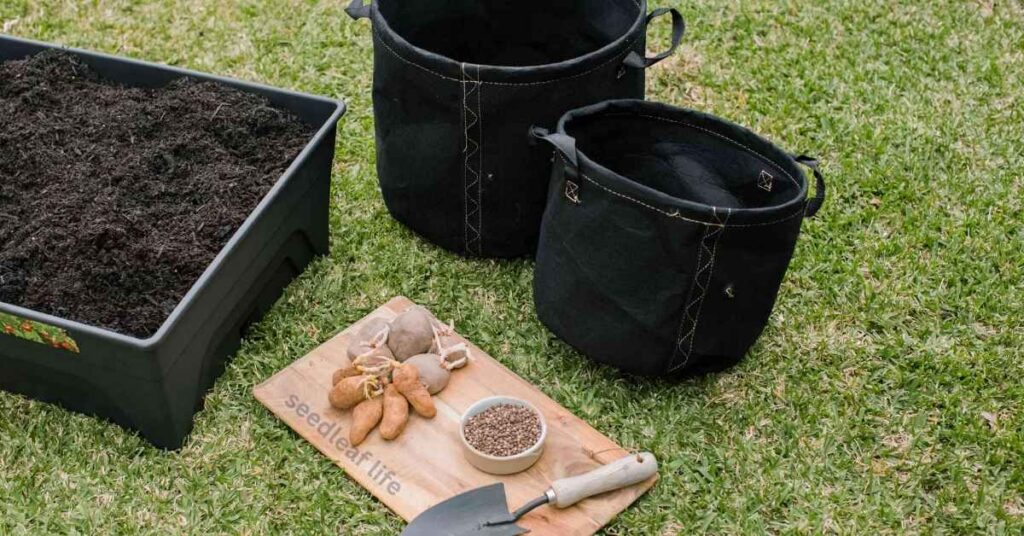
When it comes to container planting potatoes, choosing the right pot makes all the difference. The right size, material, and drainage can turn planting a potato in a pot into a simple yet successful way to achieve a healthy, abundant harvest.
Choosing the Right Pot Size for Planting a Potato in a Pot
For planting potatoes in containers, start with size — bigger is better. A 5-gallon container is the minimum, but larger pots (10–15 gallons) give potato plants more space for tubers to grow.
If you’re using smaller containers, plant fewer seed potatoes to prevent crowding and improve yield.
Pot Material
The material of your container also matters when planting a potato in a pot. Terra-cotta, fabric, or plastic pots each have their benefits, helping you choose the best option for healthy growth and a successful harvest.
- Fabric pots are ideal for container planting potatoes because they provide excellent drainage and air circulation.
- Terra-cotta pots look attractive but dry out faster.
- Plastic containers retain moisture longer and are lightweight, making them easy to move.
Drainage
When planting a potato in a pot, good drainage is key to healthy growth. Ensure your container has holes at the bottom to prevent waterlogging, as excess moisture can cause root rot and stunt your plants.
Placement for Sunlight
Potatoes thrive in full sun. For successful container planting potatoes, choose a location that gets at least 6 hours of direct sunlight daily.
With the right pot, proper drainage, and good sunlight, your planting potatoes in containers project will reward you with healthy plants and a generous harvest.
Selecting Healthy Seed Potatoes
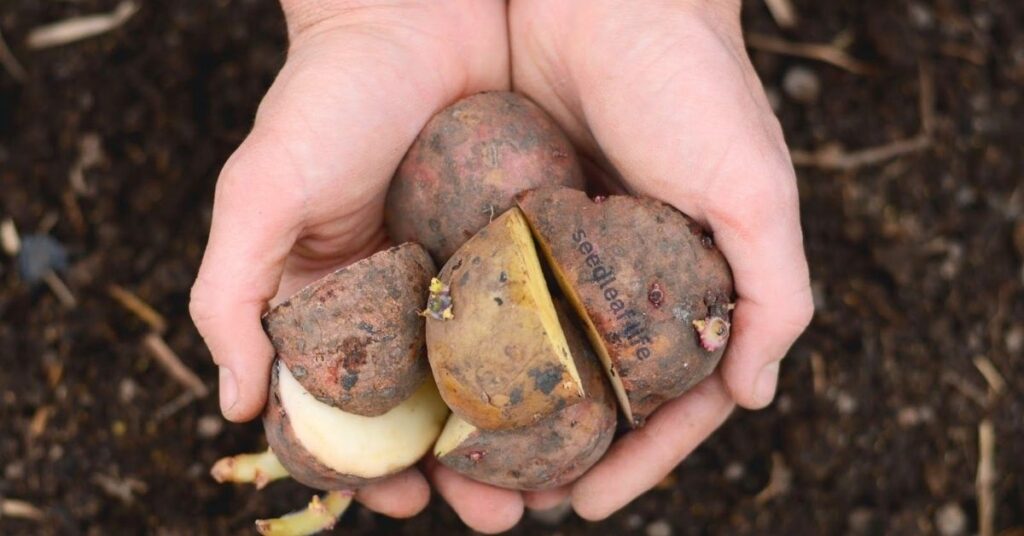
When it comes to growing potatoes successfully, selecting healthy seed potatoes is one of the most important steps. The quality of your seed potatoes directly affects your harvest and plant health.
How to Choose Quality Seed Potatoes
Look for small, firm potatoes that feel heavy for their size. Avoid any with soft spots, cuts, or signs of rot. A good-quality seed potato should have at least one or two visible “eyes” — these are the points where new sprouts will emerge. Potatoes with healthy eyes tend to produce stronger plants and better yields.
Certified Disease-Free Potatoes
Always choose certified disease-free seed potatoes. This helps prevent the spread of common potato diseases and keeps your plants vigorous throughout the growing season. Reliable garden centers and seed suppliers usually label these clearly.
Potato Planter for Planting a Potato in a Pot
Whether you’re planting in the ground or using a potato planter, healthy seed potatoes are key to success. Good-quality tubers will sprout faster and grow more uniformly, leading to higher yields and tastier potatoes.
By taking the time to select the right seed potatoes, you’ll set yourself up for a thriving potato crop — full of flavor and ready for a bountiful harvest.
How Deep to Plant Potatoes in a Pot
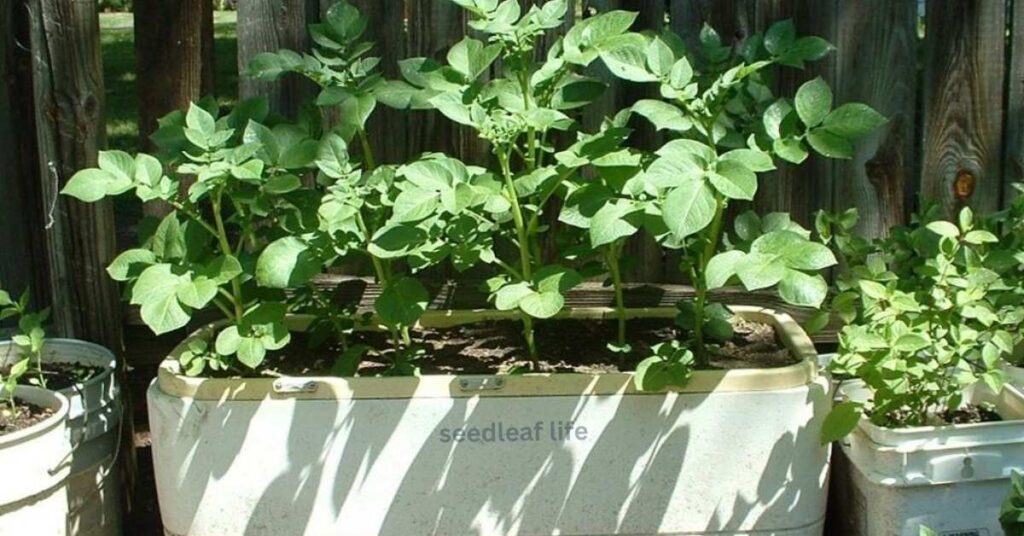
Knowing how deep to plant potatoes in a pot is crucial for healthy growth and maximum yield. Proper depth and layering help your potato plants develop strong roots and abundant tubers.
Step-by-Step Planting Instructions
- Prepare the Base Layer: Start by filling your container about one-quarter full with high-quality potting mix.
- Plant the Seed Potatoes: Place your seed potatoes (cut side up) about 4 to 6 inches deep in the soil.
- Cover and Water: Add 2 inches of soil over the seed potatoes and water gently to settle the mix.
Layering and Hilling Technique
As your potato plants grow, practice “hilling” — adding more soil around the stems as new leaves emerge. This technique supports the plants and encourages more tubers to form along the buried stems. Continue layering until your container is nearly full.
Spacing Tips
Keep each seed potato about 12 inches apart to allow for proper air circulation and tuber growth. Proper spacing ensures healthier plants and easier maintenance.
With the right depth and spacing, you’ll see how deeply planting potatoes in containers can make a big difference in your harvest. Understanding how deep are potatoes planted helps create strong, productive plants that reward you with a generous crop.
Best Soil and Fertilizer Tips
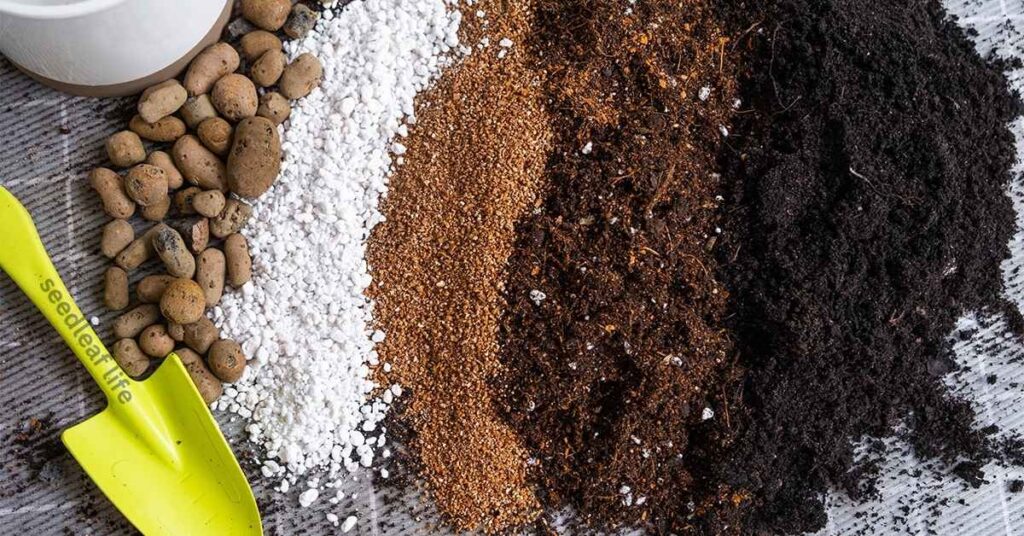
When growing potatoes in pots, the right soil mix makes all the difference. Potatoes need loose, well-draining soil that allows roots and tubers to expand freely.
Recommended Soil Mix
Create a balanced mix using:
- 1 part peat moss – retains moisture while staying light
- 1 part compost – adds nutrients and organic matter
- 1 part perlite – improves aeration and drainage
When planting a potato in a pot, adding a handful of worm castings or other organic matter provides an extra nutrient boost for thriving plants. Compost enriches the soil and improves water retention, helping your potato plants stay healthy and productive.
Fertilizing for Healthy Growth
Fertilizing is essential for successful container planting potatoes. Use a balanced, slow-release fertilizer every 4–6 weeks to provide steady nutrition. Avoid over-fertilizing, as too much nitrogen can produce lush leaves but fewer tubers.
As your potato plants grow, top-dress with fresh compost — this helps retain moisture, enriches the soil, and suppresses weeds naturally. For other container-friendly plant ideas, see 11 Best Determinate Tomatoes to Grow.
Boosting Tuber Development
When the foliage begins to yellow, switch to a high-potash fertilizer to promote strong tuber development just before harvest.
With the right soil blend and fertilizer routine, your growing potatoes in pots project will produce healthy, flavorful potatoes ready for an abundant homegrown harvest.
Watering and Care
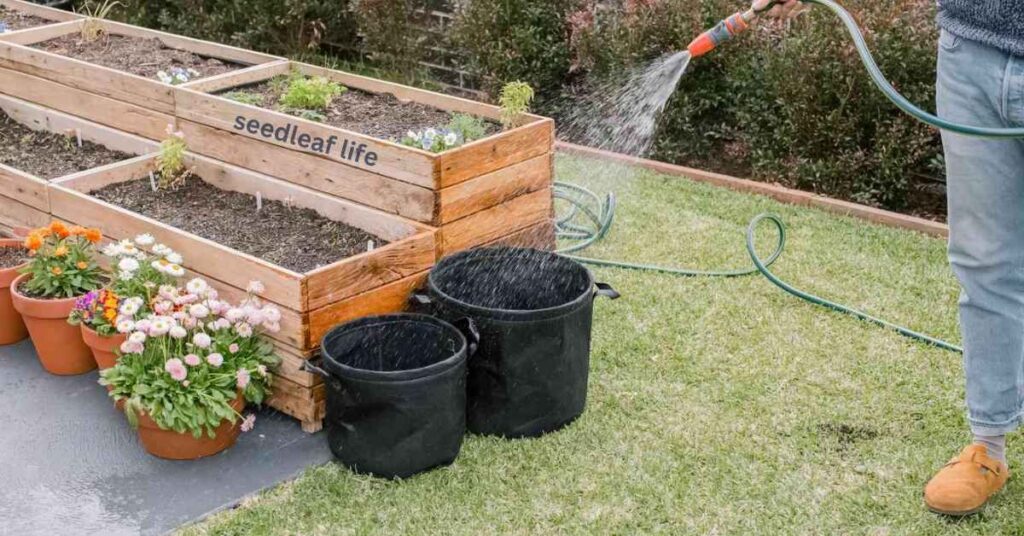
Proper watering and care are essential for healthy potato growth, especially when watering potatoes in pots. Keeping the right moisture balance ensures your plants develop strong roots and full-sized tubers.
How Often to Water
When planting a potato in a pot, it’s important to maintain consistent moisture without letting the soil become soggy. Generally, watering once or twice a week works well — just increase the frequency during hot or dry weather to keep your plants thriving.
Check the top inch of soil regularly, if it feels dry to the touch, it’s time to water. Always water deeply so moisture reaches the lower soil layers where tubers form.
Sunlight Needs
Potatoes thrive in bright, indirect sunlight. Place your pots in an area that receives morning sun and light afternoon shade. Too much harsh sunlight can scorch the leaves, while too little light can stunt growth.
General Maintenance
Regular maintenance helps your potato plants stay strong and productive:
- Watch for pests like aphids or beetles and remove them early.
- Weed control is important — weeds compete for water and nutrients.
- Periodically check for proper drainage and adjust watering if needed.
With consistent watering, good sunlight, and attentive care, your plants will thrive. And when you wonder, “When should you plant potatoes?”, you’ll already be ahead — ensuring your garden is ready for a rewarding harvest of homegrown potatoes.
Amazing Health Benefits of Growing Potatoes in a Pot
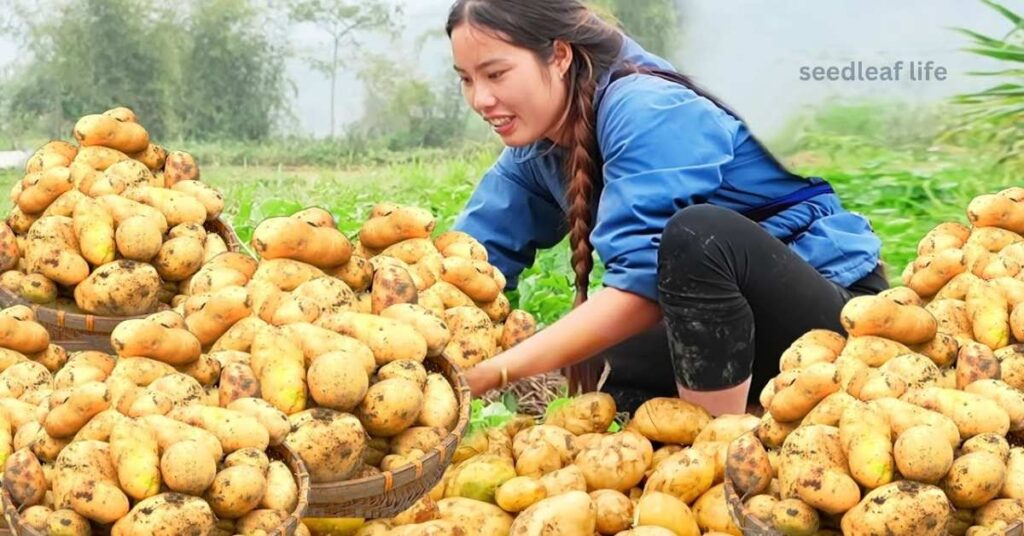
Growing your own potatoes in a pot isn’t just convenient — it’s also incredibly healthy and rewarding. When planting a potato in a pot, you’re creating a simple way to grow fresh, nutrient-rich food right at home.
Potatoes are packed with essential nutrients that support overall well-being, and cultivating them yourself ensures you’re eating the freshest, cleanest produce possible.
Nutritional Benefits of Potatoes
Potatoes are a natural source of:
- Vitamin C, which strengthens your immune system and promotes glowing skin.
- Vitamin B6, vital for brain health and metabolism.
- Potassium, which helps regulate blood pressure and supports heart health.
When planting a potato in a pot, you have full control over the growing environment—meaning no harmful pesticides or chemicals commonly found in store-bought potatoes. Freshly harvested potatoes are richer in flavor and retain more nutrients compared to those that have been stored for long periods.
Why Growing Your Own Potatoes Matters
Growing your own food encourages healthier eating habits. Having fresh potatoes within reach makes it easy to cook wholesome, homemade meals. Whether you boil, bake, or roast them, potatoes grown from planting a potato in a pot maintain their natural nutritional value and fresh, homegrown taste.
Beyond the physical benefits, gardening itself offers mental wellness advantages—it’s calming, reduces stress, and gives you a sense of accomplishment. There’s something deeply satisfying about harvesting your own food, connecting you more closely to what you eat and promoting a fresh, mindful lifestyle.
By growing potatoes in a pot, you’re not just cultivating plants — you’re nurturing your health, your habits, and your connection to nature.
Harvesting Your Potatoes
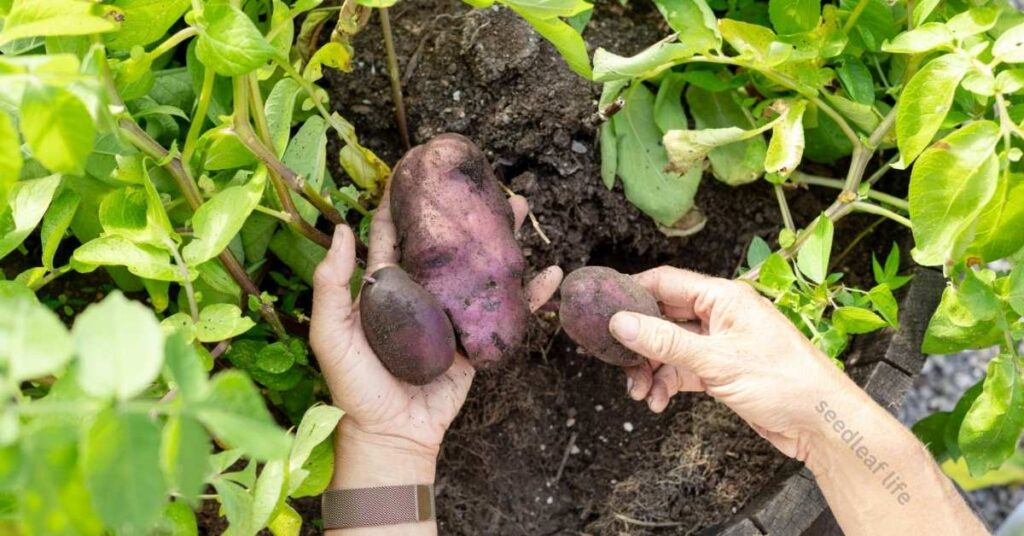
Harvesting your potatoes is one of the most rewarding parts of container planting potatoes. After weeks of care and growth, it’s finally time to enjoy the fruits of your effort.
When to Harvest
The key to successful harvesting potatoes in pots is timing. Wait until the tops of the plants start to yellow and die back — this signals that the tubers have matured. If you’re unsure, gently check one plant to see the size of the potatoes.
For richer flavor and stronger skins, let the plants sit for an extra week or two after the foliage dies back before harvesting.
How to Harvest Without Damaging Tubers
When harvesting after planting a potato in a pot, handle your plants and soil gently to avoid bruising or piercing the potatoes. Follow these steps:
- Carefully tip your pot onto a tarp or large container to catch the soil.
- Use your hands or a small garden fork to loosen the soil and uncover the potatoes.
- If using fabric or Patagonia fiber pots, simply roll or pull the sides away — this makes it easier to collect potatoes without damage.
After harvesting, brush off excess soil but avoid washing the tubers immediately if you plan to store them. Allow them to air-dry in a cool, shaded area for a few hours before using or storing.
With patience and gentle care, your harvesting potatoes in pots process will reveal a bounty of fresh, flavorful potatoes — a perfect reward for your container gardening efforts.
Common Problems and Solutions
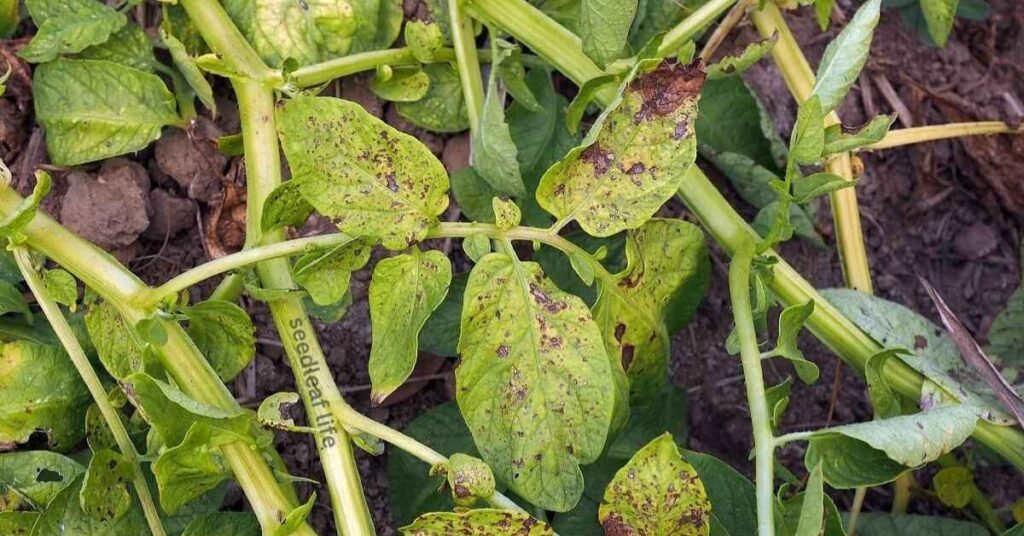
When you’re planting a potato in a pot, a few common problems can arise — including pests, diseases, and overwatering. Understanding these issues and taking preventive action will help you keep your potato plants healthy and productive.
Pests
Common pests like aphids and potato beetles can damage your plants by feeding on leaves and spreading disease.
Solutions:
- Introduce natural predators such as ladybugs to control aphids naturally.
- Regularly inspect your plants for pest activity and remove insects by hand if needed.
- Keep your pots and surrounding area clean to prevent infestations.
Diseases
Potato plants grown from planting a potato in a pot can sometimes suffer from blight or fungal infections. To prevent this, ensure good air circulation, avoid overwatering, and use well-draining soil to keep your plants healthy.
- Ensure your pots have good drainage to prevent soggy soil — the leading cause of fungal growth.
- Rotate crops each season to avoid soil-borne diseases.
- Disinfect your tools before use to stop disease spread.
Overwatering
Overwatering is one of the most common mistakes people make when planting a potato in a pot, as excess moisture can lead to root rot and poor tuber development.
Solutions:
- Check soil moisture before watering — the top inch should feel dry before adding more water.
- Use self-watering pots or a well-draining potting mix to keep moisture levels balanced.
- Elevate pots slightly off the ground to improve air circulation and drainage.
By staying vigilant and following these tips, you can easily prevent common issues that come with planting a potato in a pot. With proper care and attention, your potato plants will stay healthy, pest-free, and ready for a hearty harvest.
Conclusion
Growing potatoes in pots is simple and rewarding. By choosing the right container, healthy seed potatoes, good soil, and giving them proper watering and care, planting a potato in a pot can be easy and enjoyable, letting you enjoy a fresh, homegrown harvest right at home. Try container planting potatoes this season and see how fun it can be!
Share your potato-growing experience in the comments, and don’t forget to subscribe for more simple gardening tips!

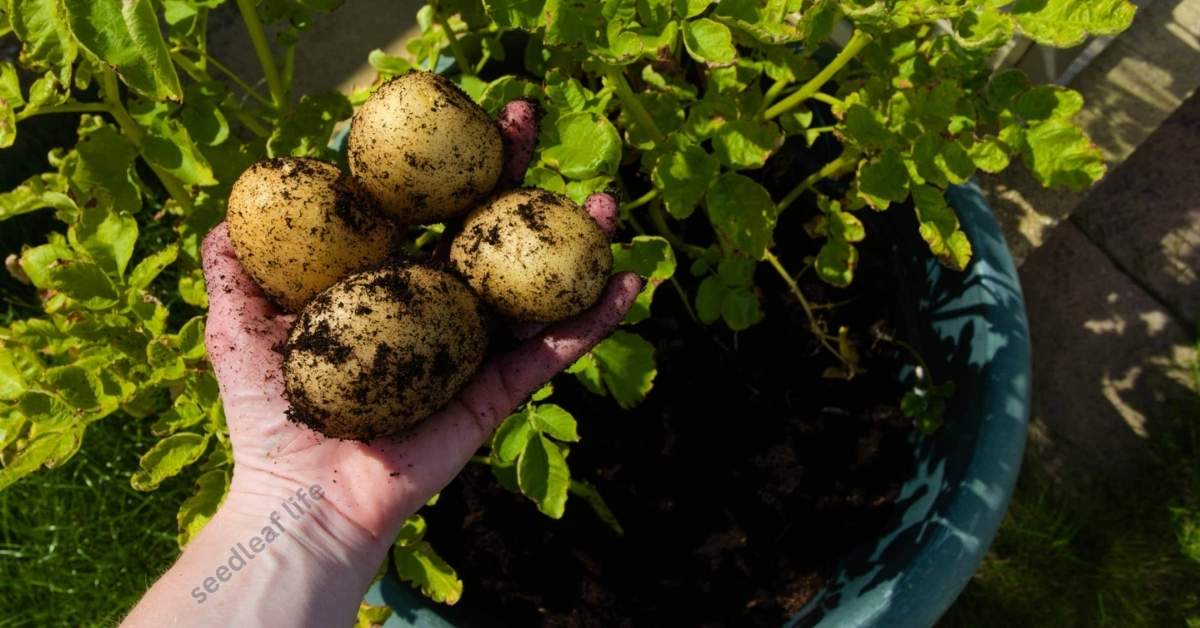
Leave a Reply
You must be logged in to post a comment.